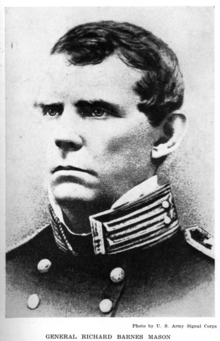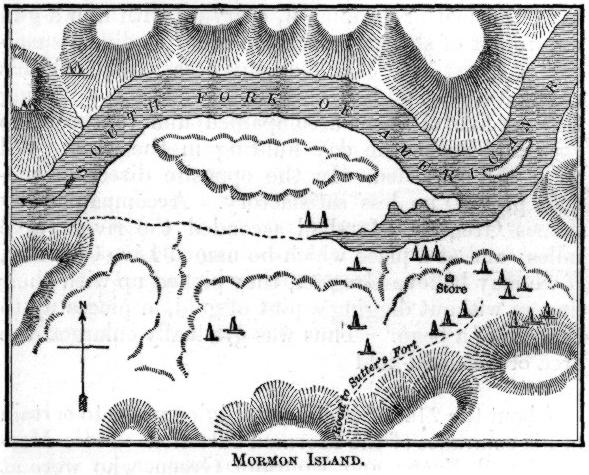As I wrote last month, the California Gold Rush began in late January 1848 when James Marshall found gold on Johann Sutter’s land near what is now Sacramento, California. At the time, California was still owned by Mexico, though the U.S. Army controlled it, and the Treaty of Guadalupe Hidalgo was about to be signed, which would cede the land to the United States.

Johann Sutter wanted to cover all his bases. While he intended to focus on his lumbering and agricultural operations, he also wanted to be sure he had mineral rights to the land where the gold had been found before the news leaked out. In mid-February 1848, Sutter sent an emissary, Charles Bennett, to Monterey, where Colonel Richard Mason, the U.S. military governor of California, resided.
Charles Bennett had worked as a carpenter with James Marshall on Sutter’s Mill. He may have been present when the gold dust was first found at the mill site, and he claimed he was the first to see the glint of the precious metal.
Both Sutter and Marshall trusted Bennett, but it turned out he was the wrong man to keep a secret. Bennett told everyone he met along the way about the gold. Bennett stopped at a store in Benicia, about 100 miles from the gold find. The store was operated by Edward von Pfister and served as a hotel for travelers. Bennett showed the gold dust he was taking to Monterey to the other men present that evening, and many of the men in Benicia immediately left to search for gold around Sutter’s Mill.
Furthermore, Bennett’s attempt to secure the mineral rights for Sutter from Colonel Mason was unsuccessful. Because word of the treaty between Mexico and the United States still had not reached California, Colonel Mason told Bennett he couldn’t do anything for Sutter.
Later in 1848, after Colonel Mason toured the gold fields for himself, he sent a report to President Polk about the gold find. Polk’s mention of this report in his State of the Union address touched off the rush of the Forty-Niners to California.

But in the meantime, the Gold Rush was on in California. Other men in addition to those from Benicia were also prospecting near Sutter’s Mill. In early March 1848, Mormons working for Sutter on his mill discovered gold the rocks of a creek bed a few miles away from the mill. Later, this area became known Mormon Island. The Mormons told their news to a Mormon storekeeper, who sent the news to Samuel Brannan, a Mormon elder and newspaperman in San Francisco.
From that point, there was no way to keep the secret. In the 1840s, just as today, profitable commercial ventures cannot be kept quiet.
So by the time the news of the Treaty of Guadalupe Hidalgo did reach California in August 1848, the Gold Rush was well underway—at least among men already in California. It was too late for Sutter to keep his secret.
When have you tried to keep a secret to no avail?




i guess grandma’s wisdom, “If you tell a secret, it’s no longer a secret,” and the old saying “Loose lips sink ships” sitll apply.
Nothing has changed in human nature in the last couple of centuries.
Theresa
I’ve always been good at keeping a secret. My friends refer to me as “the vault.”
Jill,
Sutter should have sent you to Monterey!
Thanks for reading,
Theresa
It certainly would have been a better choice than Bennett. Now I’ve got “Bennett the Blabbermouth” stuck in my head. 🙂
[…] fact, Colonel Mason’s letter regarding the discovery of gold arrived in Washington, D.C., on November 22, 1848, but it took a […]
[…] described before, James Marshall found gold at Sutter’s Mill in January 1848. Coincidentally, the Treaty of Hidalgo was signed with Mexico on February 2, 1848. California was now a part of the United States, and […]